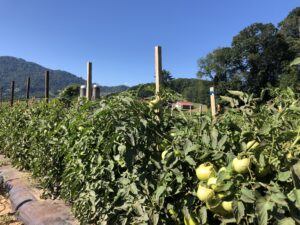
2026 Fungicide Guide for Tomatoes in North Carolina
The fungicide spray guides for tomato and pepper are intended for commercial growers and are suggested products or programs …


El inglés es el idioma de control de esta página. En la medida en que haya algún conflicto entre la traducción al inglés y la traducción, el inglés prevalece.
Al hacer clic en el enlace de traducción se activa un servicio de traducción gratuito para convertir la página al español. Al igual que con cualquier traducción por Internet, la conversión no es sensible al contexto y puede que no traduzca el texto en su significado original. NC State Extension no garantiza la exactitud del texto traducido. Por favor, tenga en cuenta que algunas aplicaciones y/o servicios pueden no funcionar como se espera cuando se traducen.
Inglês é o idioma de controle desta página. Na medida que haja algum conflito entre o texto original em Inglês e a tradução, o Inglês prevalece.
Ao clicar no link de tradução, um serviço gratuito de tradução será ativado para converter a página para o Português. Como em qualquer tradução pela internet, a conversão não é sensivel ao contexto e pode não ocorrer a tradução para o significado orginal. O serviço de Extensão da Carolina do Norte (NC State Extension) não garante a exatidão do texto traduzido. Por favor, observe que algumas funções ou serviços podem não funcionar como esperado após a tradução.
English is the controlling language of this page. To the extent there is any conflict between the English text and the translation, English controls.
Clicking on the translation link activates a free translation service to convert the page to Spanish. As with any Internet translation, the conversion is not context-sensitive and may not translate the text to its original meaning. NC State Extension does not guarantee the accuracy of the translated text. Please note that some applications and/or services may not function as expected when translated.
Collapse ▲
The fungicide spray guides for tomato and pepper are intended for commercial growers and are suggested products or programs …

Winter annual weeds (like chickweed, henbit, and annual bluegrass) germinate in cool, moist soils. While these small seedlings don’t …
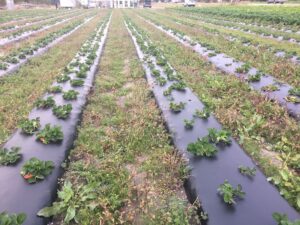
Root rot caused by the fungus-like pathogen Phytophthora is a common problem on strawberries in North Carolina, and once …

The Walgenbach Lab is excited to post a new web resource for vegetable growers and agents who are facing problems with …
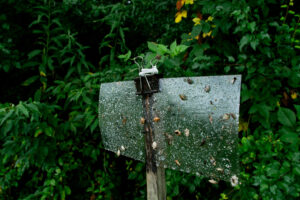
Little has changed in insect activity during the past week, with trap captures continually being low or on the …

By Dominic Reisig and Guy Collins A new invasive insect, the cotton jassid (Amrasca biguttula or two-spot cotton leafhopper), has …
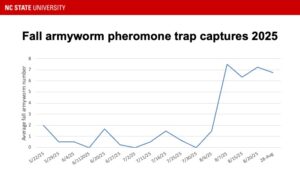
Light and pheromone traps are tools that help us know when certain insects are active in crops like cotton, …

With the exception of the brown marmorated stink bug (BMSB), trap captures of key pests declined during the past …
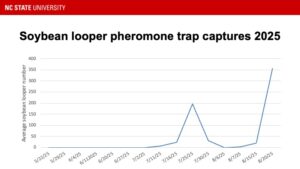
Light and pheromone traps are tools that help us know when certain insects are active in crops like cotton, …
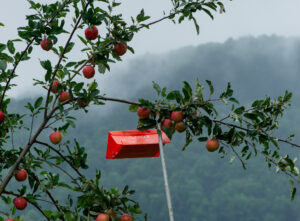
Codling moth and oriental fruit moth (OFM): With the exception of locations that have had high codling moth problems …

Soybean aphid has been more prevalent this year than normal, especially in eastern North Carolina. This is one of …
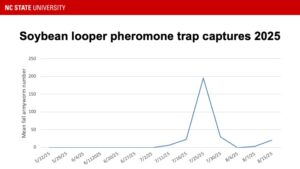
Light and pheromone traps are tools that help us know when certain insects are active in crops like cotton, …
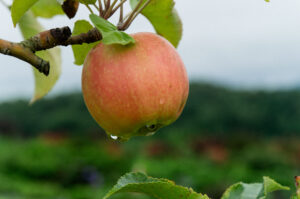
During the past week, codling moth and apple maggot numbers in traps have slightly declined, oriental fruit moth (OFM) …
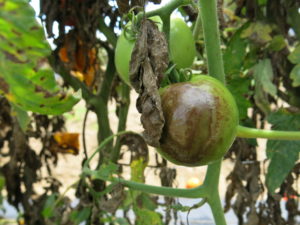
Reports of late blight on tomato around McDowell and Rutherford Counties have been circulating, but not yet confirmed. Regardless, …
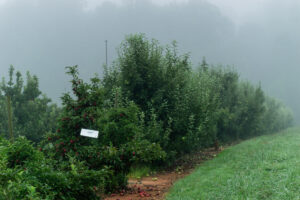
The recent cool weather has slowed insect development, and consequently not much has changed in the past week. Codling …

Cucumber downy mildew (CDM) has been confirmed on cucumber plant samples from a research plot at the Mountain Research …

As August approaches, apple insect activity continues to pick up. Although many orchards still have low pest pressure, codling …
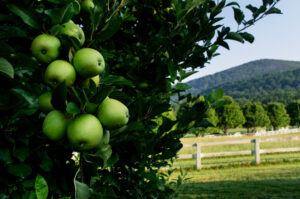
As we move into the latter part of July and into August, the diversity of potential insect pests will …

Corn earworm moth catches have been ticking up across the state this week, especially in southern counties of the …
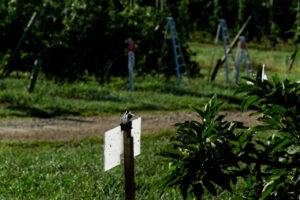
Codling moth: At 1600 cumulative degree days (DD), we are in the midst of second generation codling moth in …